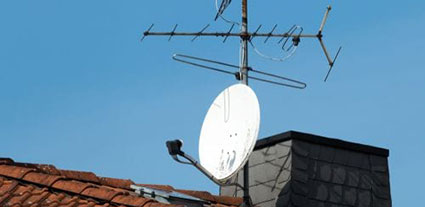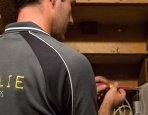The last analogue TV signal in Australia was switched off back in 2013. Since then, many homeowners have been accessing digital TV channels through a conventional analogue antenna.
This means the quality of signal and the number of channels you can access is limited compared to a native digital aerial. For this reason, many homeowners are now considering upgrading to a native digital antenna.
So in this guide, we are going to look at the things you need to know about digital antennas before making the upgrade:
1. Size and shape matters
The bigger the antenna the more surface area it has, so the wider range of frequencies it can pick up. This means a bigger antenna will be able to pick up weaker signals than a smaller one. This is an important consideration if you live in a remote area.
The shape of the antenna also plays a factor in the quality of the signal. Some antennas are designed to pick up specific frequencies such as VHF for example. The right shaped aerial for your home will depend on its location and the direction of the signal.
The antenna experts at Smillie Electrical can help you choose the right type of digital antenna for your location.
2. Indoor vs outdoor antennas
Digital antennas can be installed either inside or outside the home. While indoor aerials are much easier to install, up to 50% of the signal can be lost. So an exterior mounted aerial is the preferred method, especially if you want to maintain HD signal quality.
If an exterior aerial is not possible on your property, you should look to install a loft antenna over a standard indoor one. This is because loft antennas pick up more of the signal than indoor antennas, but they still underperform outdoor antennas.
3. The types of antenna
When it comes to digital antennas there are several different types to choose from. We’ll look a the four main types here:
Dipoles
Dipoles are synonymous with the rabbit ear interior antenna that were popular in the early noughties. They consist of two identical antennas connected to a single TV tuner. Dipoles can consist of single or stacked conductors which help to improve performance.
Dipoles are compact and omnidirectional which allows them to receive signals from all directions. This makes them suitable for locations where space is at a premium, or where the strength of the signal may be blocked by mountains or trees.
LPDA
Log-Periodic Dipole Array (LPDA) antenna consists of several dipoles arranged in an echelon formation. This creates a wideband antenna that is optimised for picking up VHF signals.
LPDA antennas are available with either straight or V-shaped elements. Straight antennas are good at canceling out interference, while V-shaped elements have higher gain for some VHF channels.
Reflector
Reflector antennas act like a mirror helping to reflect the signal into a single dipole at the centre. They can be flat, curved or paraboloid, with the latter being familiar to most of us as a satellite dish.
Reflector antennas have excellent bandwidth, which makes them good at picking up UHF signals. However, they need to be positioned accurately to achieve the best performance. In some cases, this may not be possible due to geographic features.
Yagi
The Yagi is a combination of the three other antenna types. They typically have an LPDA type array with multiple dipoles that feed the signal into the centre of a reflector. As a result, they offer excellent unidirectional performance.
However, they are sensitive to frequency so care needs to be taken to position them correctly to achieve the best performance. They are also typically more expensive than other types of antennae.
Need help choosing an antenna?
If you need help choosing the right antenna for your home, get in touch with the antenna experts at Smillie Electrical today. We have many years of experience installing digital antennas in homes in the Melbourne area.
Get in touch for a FREE consultation today by calling 03 9069 9660 or complete the contact form here and we’ll get back to you at a convenient time.



